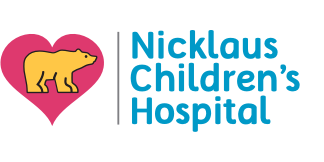- Parents Home
- Para Padres
- Allergy Center
- Asthma Center
- Cancer Center
- Diabetes Center
- Diseases & Conditions
- Doctors & Hospitals
- Emotions & Behavior
- First Aid & Safety
- Flu Center
- Food Allergy Center
- General Health
- Growth & Development
- Heart Health
- Homework Help Center
- Infections
- Newborn Center
- Nutrition & Fitness Center
- Play & Learn Center
- Pregnancy Center
- Q&A
- Recipes
- School & Family Life
- Sports Medicine Center
- Videos
- Kids Home
- Para Niños
- Asthma Center
- Cancer Center
- Diabetes Center
- Feelings
- Getting Help
- Health Problems
- Health Problems of Grown-Ups
- Heart Center
- Homework Center
- How the Body Works
- Illnesses & Injuries
- Kids' Medical Dictionary
- Movies & More
- Nutrition & Fitness Center
- Puberty & Growing Up
- Q&A
- Recipes & Cooking
- Relax & Unwind Center
- Stay Safe Center
- Staying Healthy
- Staying Safe
- Videos
- Teens Home
- Para Adolescentes
- Asthma Center
- Be Your Best Self Center
- Cancer Center
- Diabetes Center
- Diseases & Conditions
- Drugs & Alcohol
- Expert Answers (Q&A)
- Flu Center
- Homework Help Center
- Infections
- Managing Your Medical Care
- Managing Your Weight
- Nutrition & Fitness Center
- Recipes
- Safety & First Aid
- School & Work
- Sports Center
- Stress & Coping Center
- Videos
- Your Body
- Your Mind
A to Z: Tetralogy of Fallot
Tetralogy of Fallot is a combination of four birth defects that together affect the structure of the heart and how blood flows through it.
The four specific heart defects that make up tetralogy of Fallot (fah-LO) are:
- ventricular septal defect
- pulmonary valve stenosis (narrowing)
- right ventricular hypertrophy
- overriding aorta
More to Know
Babies with tetralogy of Fallot can have cyanosis, which is a bluish-purple color to their skin, lips, and fingernails. This happens when not enough blood reaches the lungs to get oxygen. They may also fail to gain weight, have difficulty feeding or breathing, and have enlarged skin or bones around the fingernails (known as clubbing).
Tetralogy of Fallot develops in utero while the heart is forming. A specific cause hasn't been determined, but babies with certain genetic disorders are at higher risk for developing it. Other risk factors include advanced maternal age and, during pregnancy, poor nutrition, diabetes, or certain viral illnesses.
Keep in Mind
Tetralogy of Fallot is a serious condition that requires young infants to have heart surgery to repair the defect. The good news is that most babies recover fully and thrive into adulthood. They will, however, need to be monitored closely by a heart specialist for the rest of their lives.
All A to Z dictionary entries are regularly reviewed by KidsHealth medical experts.

© 1995- The Nemours Foundation. KidsHealth® is a registered trademark of The Nemours Foundation. All rights reserved.
Images sourced by The Nemours Foundation and Getty Images.

